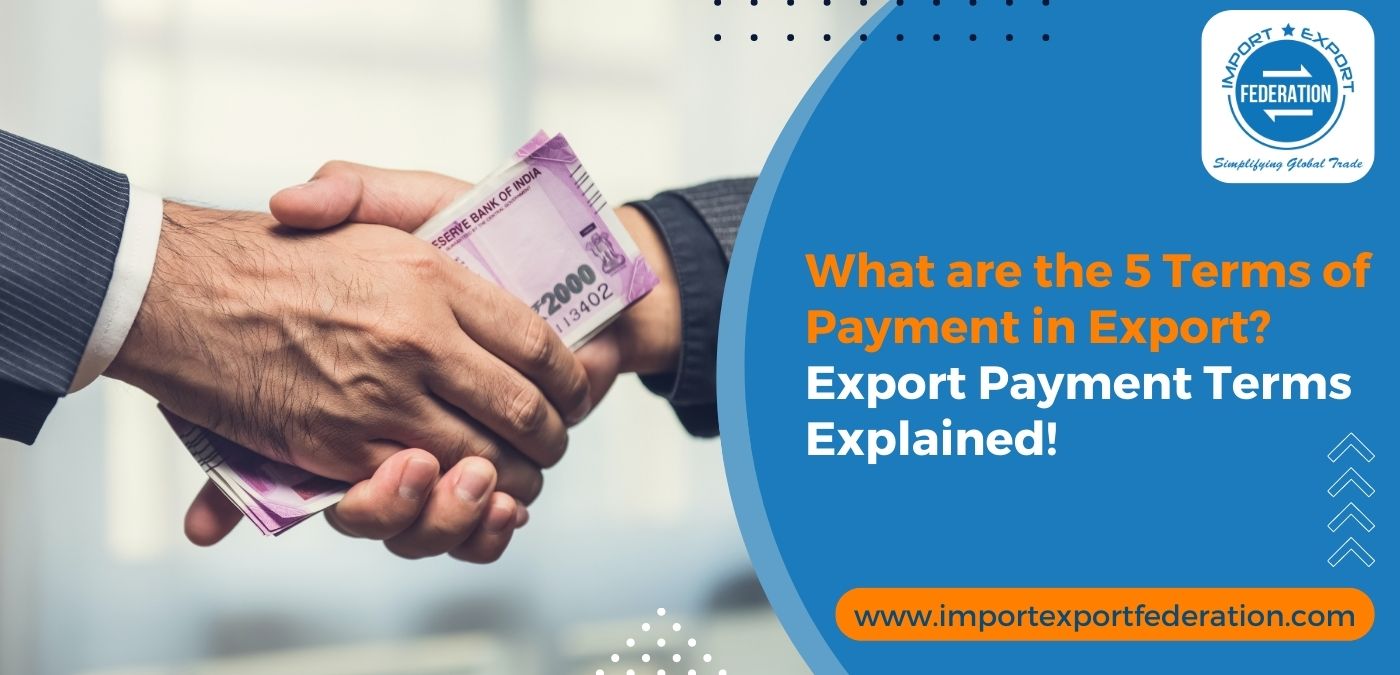Once you find the right buyers for your export products, there is a crucial aspect left for the exporter. These are the terms of payment in export. This is an integral part of any trade, in which the importing party and exporting party come to an agreement regarding the finalized payment. Lots of negotiation can go into deciding the export payment terms between the buyer and seller.
If you are a new exporter, there is a risk that goes into invoices, which specify the total amount of the products, along with the preferred method of payment. Terms of payment in export also differ more and are riskier due to the added factor of physical distance and contrasting laws and legalities between the 2 parties of different countries.
This is why there exist a variety of terms of payment in export that exporters and importers can take advantage of. These include mutual terms of the agreement, but all differ from each other. Some might be more favorable to the exporter, while others might favor the importer more.
The export payment terms also depend on the previous relationship and trading history between the 2 parties. So, how many terms of payment in export are there? And how can you choose the best one for you? Read on to find out!
What are the Different Terms of Payment in Export?
Clean Payments
The first 2 terms of payments in export are called ‘clean payments.’ In these, all the shipping documents only circulate between the 2 parties involved directly. With no involvement of a third party, these are usually uncomplicated and cheap as well.
1. Open Account
In the many terms of payment in export, the open account one is built on trust and is more favorable to the buyer or importer. The payment is done after receiving the goods. A credit period is agreed upon beforehand of a certain number of days and the payment is made at the end of it.
There is also a gap between the dates of the receipts of the purchase order and the final payment(s). This gap belongs to the time taken for production and shipping.
This method can prove to be more favorable to the buyer, due to the final payment coming after the goods have reached. The exporter can face a huge gap in time while receiving their amount. This is why this method is usually opted for by parties with extremely high trust in each other or if there is a promise of high levels of volume later on.

2. Cash in Advance
Acting as the opposite of an open account, the cash-in-advance payment method allows the goods to be shipped only after the payment (partial or full) has been completed from the buyer’s end. A receipt of payment must be produced for the same. This method of payment is highly favorable to the exporter, but a significant risk for the importer or buyer.
3. Documentary Collection
The third in the terms of payment in export is called a documentary collection. This method involves the involvement of a third party, which is the bank. Both parties involve their own banks. First, the exporter ships their products. Then they submit the shipping documents and collect orders from their own bank. This bank then sends this to the importer’s bank along with instructions.
The bank later passes this information to the importer who pays its own bank. Finally, there is a transfer from bank to bank before the amount is received by the exporter. There are 2 types of Documentary collections which are:
- Cash against documents: This payment term takes place when the importer is compelled to pay their amount “due at sight”. This basically means that the buyer makes their payment before the documents are released by their own bank or the collecting bank.
- Documents against acceptance: For this payment term, there is an arrangement involved. This permits the buyer to make the payment after a specific duration of time. There is a time draft accepted by the exporter which they promise to adhere to. After the acceptance, the documents are released to the buyer by the bank.

4. Letter of Credit
One of the most usual terms of payment in export is the letter of credit. This is due to its reliability and common nature in international trade. In this method, a Letter of Credit is issued by the bank of the buyer and acts as a commitment to the exporter. This letter of credit acts as a pledge regarding the timely completion of the payment to the seller.
Read this blog for a list of 10 documents required for export from India!

5. Consignment
The consignment type of payment applies to the export which involves a third-party distributor. In this, the exporter gives their goods to a foreign distributor who then sells them to the buyer. With the consignment method, the exporter receives the payment only after the goods have been sold to the end customer. It is similar to the open account method of payment.
Like the open account method, it’s advisable to opt for this only if the third-party distributor is reliable and reputable. Also, make sure you have insurance for the same in place.
Read this blog to know about Cargo Insurance- what it is and its types!
Conclusion
These days, the global market requires exporters to offer the best possible offer to their customers with the appropriate prices along with the right payment methods. This is why these terms of payment in export are important knowledge every exporter, and importer, should be accustomed to.
Apart from payment terms, there are many more terms, and import–export knowledge one needs to start their export. Along with learning the right market trends, finding trustworthy buyers, accurate documentation and customs clearance, and practical experience, you can learn and master the right and profitable way to export with the Import Export Federation. Register and start your journey via our online, and offline courses, port visits, and market tours today.



 58,000+ Members
58,000+ Members  1,171+ Reviews
1,171+ Reviews 


